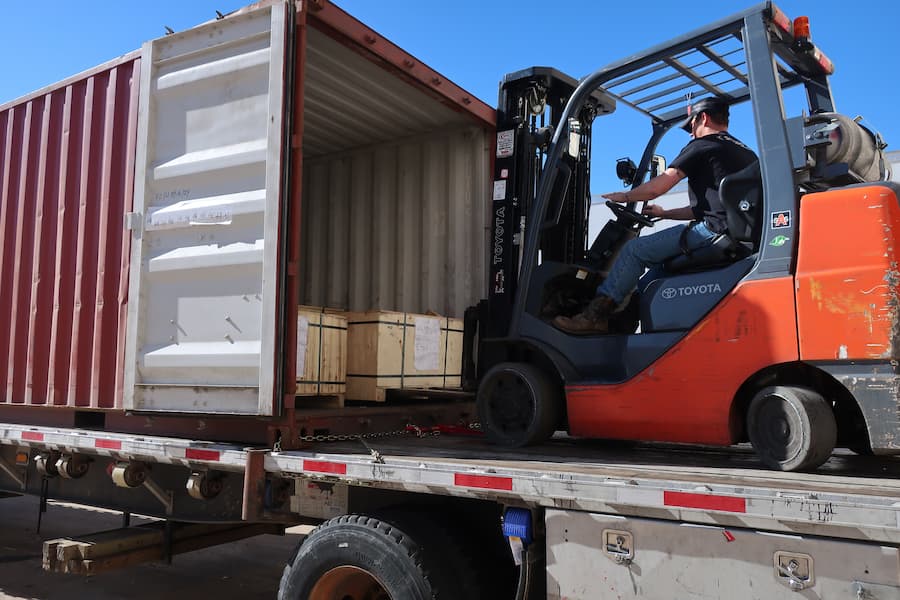Things happen—unexpected storms, traffic accidents, human error—and those things can inadvertently damage goods during transport. If they do, as a shipper or consignee, you can mitigate the loss by filing a cargo claim. Also known as a transportation claim, or loss and damage claim, this legal document asks the transportation provider (carrier or broker) to compensate you for damages, i.e., your costs, including profits for sold goods.
Of course, before filing a claim, you need to conduct an investigation. The checklist below can serve as an outline* if you decide to pursue the investigation yourself:
- Act ASAP. Begin your investigation immediately. If you procrastinate, you may miss out on valuable information. You also need to file your claim as soon as possible in case it is denied. A denial starts a ticking clock: Unless your contract with the carrier or broker states differently, you have two years from the date of denial of the claim to file. In addition, some courts have ruled that failure to file a claim within nine months bars any further claims against the motor carrier.
- Take photos. Get pictures of the damaged goods, trailers, and equipment used in transport, recording the time and date of each photo taken.
- Get the facts. Find out (and write down) the date, time, and place of loss. Then dig into details: Document the damaged freight’s weight, dimensions, and packaging.
- Conduct interviews. Speak to the people involved as soon as possible. Remember to take notes or ask if you can record the conversation. Talk to the driver first. Find out about his experience, both with your specific type of freight and in general. Ask about his driver’s logs: who has them and how they are kept. Ask if he took any photos of the damage and if he knows of any witnesses. Once you’ve identified witnesses, talk to them, too. Remember to get full contact information, including their titles and the role they played in the incident. Interview the consignee, too—or whoever accepted or rejected the delivery—and ask for a written description of the freight on arrival. Consider getting especially important statements signed and notarized.
- Collect all necessary documents. Gather all shipping documents, copies of police reports, and any other documents that support proof of damage.
- Determine damages. What’s the total loss? Was the entire load damaged? Can any of the loss be mitigated? According to Transportation Intermediaries Association (TIA), courts typically allow the invoice price of sale from shipper to the consignee (including lost profits), or the shipper’s invoice costs plus reasonable overhead if the freight was not sold at the time of loss.
- Check the weather. Was the freight water-damaged? Did it suffer from excess heat? Did the weather contribute to a traffic accident? Could the reason for the damage be considered an “Act of God”? These details may be important to your investigation.
- Put insurance company on notice
- Scrutinize the delivery details. When was the load delivered, if ever? Get the exact details, including the weather conditions during delivery. If the consignee rejected the delivery, ask for a written statement regarding the reason for the rejection. Check to see if that reason was on the bill of lading and if the carrier, broker, and shipper had advance written notice that the consignee would reject a load for that particular reason.
- Ascertain where damaged freight is being held. Was the freight transported from the original delivery destination? If so, get the name of the person who authorized the move, details on any towing or storage charges, the name of the person in possession, and an exact address of the freight’s present location. If a load was partially damaged, find out if damaged and undamaged freight are at different locations.
- Salvage what you can. Salvage/mitigation is good business—and it’s required by law. Every industry has salvage people. If you are a shipper, you probably know who they are. If you are a broker, ask the shipper. Get bids from more than one company.
- Review contracts. Go over all contracts: broker/carrier contracts, broker/shipper contracts, all insurance policies, all Bills of Lading, and all other shipping documents.
- Prepare for court if necessary. If a carrier is responsible for damages—and you have the facts to support the claim—they are liable, even if their insurance refuses to pay—and even if they don’t have insurance. You have the right to take the issue to court if the carrier refuses to pay.
- Protect yourself. Even if you are not the one instigating the claim or investigation, you need to know certain information about the incident in order to make sure that any claim is justified.
If you are a carrier:
- Get a detailed description of loading procedures, including time, date, personnel, and how the freight was loaded.
- Interview everyone involved with loading, including the shipper. Record the conversation or ask for a written statement.
- Before paying a freight damage claim, get a release and assignment of the claim. Make sure it includes a cooperation clause from the shipper, which compels them to give you contact information for any witnesses and to share all documentation.
If you are a shipper:
- Make sure you have a detailed description of the load’s packaging, and that you can prove that standard packaging procedures were followed.
- Find witnesses who will testify that the product was in good condition before loading. Get written statements from them.
If you are too busy running your business to perform the investigation yourself, you can hire a commercial investigation company. If you do hire a firm, make sure that any information uncovered by your investigators is not shared with insurance investigators without your written consent. If the issue is particularly complicated or the damage is especially costly, you may want to hire a transportation attorney.
You can Feel Secure with Us
We at Next Exit Logistics would love to promise you that accidents don’t happen when you work with us. Unfortunately, accidents can happen. What we can promise is that as your freight broker, we will do our best to prevent any problems, mitigate any issue, and provide exceptional support should an accident happen. We are especially well-known for our customer service. We’re also certified to arrange the shipment of hazardous materials. To learn more about our services, call Next Exit Logistics at 866-624-2661 or contact us via e-mail.
*This checklist is not intended as legal advice and should not be used as such.




